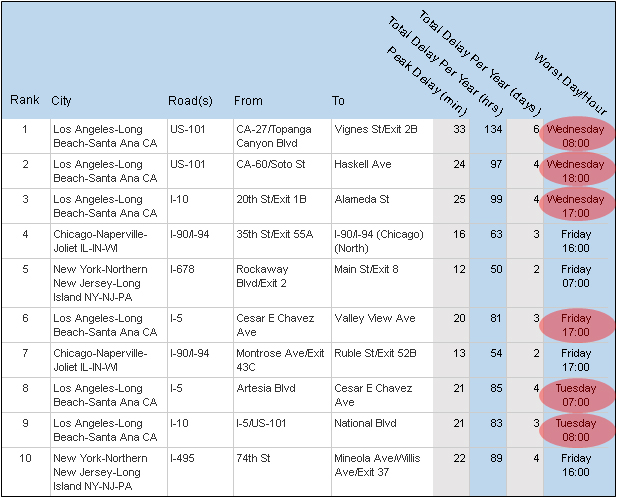Well, it looks like Trump and Clinton are winning just about everything tonight. But you didn’t need me to tell you that. My job is to distract you from the horror show that has become the 2016 presidential primary. So let’s talk about traffic.
For the millionth year in a row, Inrix announced today that Los Angeles has the worst traffic in the nation.1 This isn’t really news, but I did notice something odd about the rankings. Take a look at the table below:

These are the ten worst stretches of highway in the country, and they’re found, unsurprisingly, in our three largest cities. But in Chicago and New York City, the most rage-inducing time of the week on these extended parking lots is Friday. In LA, it’s mostly Tuesday and Wednesday; Friday takes the top spot in only one out of six. Why is that? Please leave your guesses in comments.
1But not the worst anywhere: London beats Los Angeles by a wide margin. And if Inrix collected data for Africa and Asia, I’ll bet no US city would even make the top 100.

















